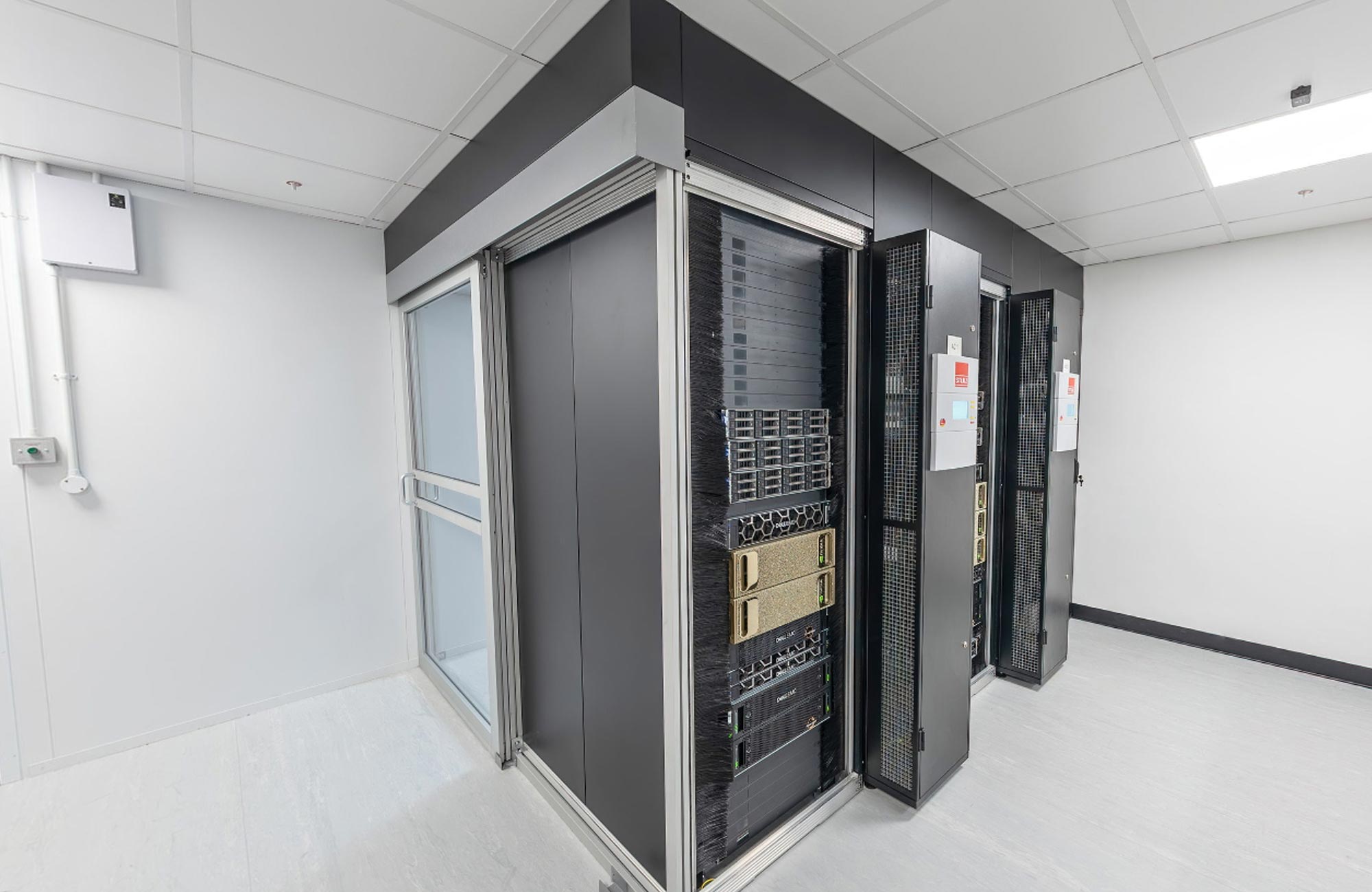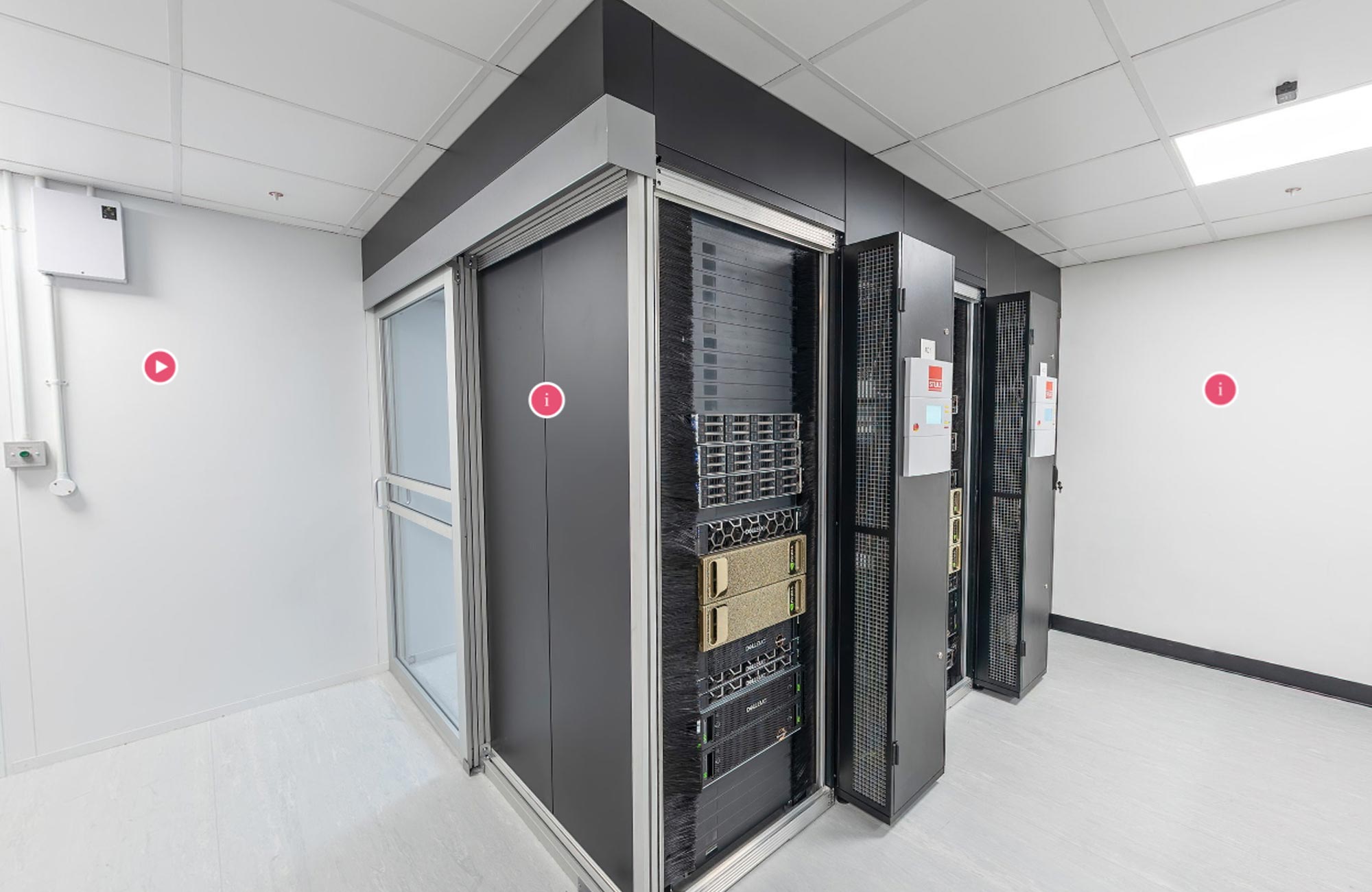Facility
High Performance Computing

Key contact: Dan Clewley
The computing capability and expertise at PML enables scientists to process vast amounts of data to tackle some of the largest challenges in marine science. The facility is pivotal in supporting the cutting-edge science produced by both the Earth Observation and Modelling groups at PML and is increasingly being used by other groups to apply techniques such as Artificial Intelligence and Machine learning.

Explore this facility in our virtual tour
Use the interactive tour to get an insight into the facility
PML has extensive computing facilities, in two interconnected data centres. This includes a high throughput computing (HTC) system consisting of 4 redundant master nodes and approximately 160 multi-core compute nodes (giving a total of over 1000 cores and 5TB of RAM) interconnected with fast networking (Gigabit Ethernet) and linked to approximately 5PB of networked storage. This HTC system is primarily used by the Earth Observation group to process satellite data.
In addition, PML has a high-performance computing (HPC) cluster. This HPC is comprised of 36 nodes (each more powerful than 4 top-of-the-range desktop computers) connected over a super-fast InfiniBand network with 45TB of fast-access disk space. Two of the nodes serve as high-memory nodes with 256GB of RAM each. The entire HPC system has 720 cores with 4.8TB of total RAM which yields 24 teraflops of performance. The HPC system is primarily used by the modelling group, in combination with national supercomputing facilities.
A recent addition to the computing facilities hosted at PML is the Massive GPU Cluster for Earth Observation (MAGEO), which was funded through a NERC transformational capital award in 2019 to provide capability to apply Artificial Intelligence and Machine Learning to Earth Observation data. The cluster is housed at PML and operated though the NERC Earth Observation Data Analysis and Artificial-Intelligence Service (NEODAAS) and used to train and apply models to large datasets.
This state-of-the-art technology is backed by security controlled access, humidity/temperature controls and a fire suppression system to protect crucial data. Storage, networking and key servers are protected by redundant power supplies and uninterruptible power supply (UPS) systems, and all core computing facilities are automatically monitored. PML also operates data services for distributing large volumes of earth observation and modelling data using redundant virtualised web servers, with advanced web visualisation and collaboration tools fostered in an open-source development process.
Back to Facilities list